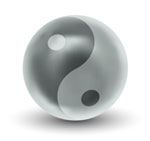 by Susan Tretakis – A many of you know, South Florida has been experiencing a cold front, with temperatures as low as 35 degrees. While I know this is not considered extreme in states that are currently experiencing temps in the single digits and below, for me, with osteoarthritis in my knees, hands and neck, South Florida’s “cold front” was a kicker.
by Susan Tretakis – A many of you know, South Florida has been experiencing a cold front, with temperatures as low as 35 degrees. While I know this is not considered extreme in states that are currently experiencing temps in the single digits and below, for me, with osteoarthritis in my knees, hands and neck, South Florida’s “cold front” was a kicker.
Yes, acupuncture helps, but this was a week without acupuncture and while I had my usual herbal mixture, I felt that I needed more. Pain was making me less mobile – the absolute worst thing you can do for arthritis – and I was pretty miserable. My herbal blend was formulated with my arthritis in mind, but there are many other things that my herbs deal with: anxiety, hair growth, liver qi stagnation, dry eye, gum bleeding and vertigo – to mention only a few joys of aging.
I wondered if I could take extra herbs for my joints or if that would be harmful. Considering myself extremely lucky that despite my incessant pestering, my acupuncturist STILL has not changed his email, I wrote and asked if I could take extra herbs for the my arthritis. Obviously, cold weather and old age do not play well together.
Kind and competent that he is, he emailed me back saying there was no problem in supplementing my herbal mixture, but it was his last sentence that caught my attention. “Remember to drink tea and foods with warming ingredients and are anti-inflammatory.”
And because I try not to bother my TCM doctor with more than one email a week, it was time to decipher this with Google. What exactly was “warming ingredients” and what foods and teas were anti-inflammatory? Apparently, it was time to write another chapter in my “Food as Medicine” notebook.
In the Western Diet, foods are evaluated for proteins, calories, carbohydrates, vitamins and other nutritional contents. In contrast, the Chinese diet – and this includes herbs – looks for not only vitamins and minerals but also for energetic properties, such as energy, flavor and movement.
I thought the answer was to drink as much hot tea as possible, so imagine my surprise when I read, “There are five energies of foods. The energies of food refer to their capacity to generate sensations – either hot or cold – in the human body. The five kinds of energy are cold, hot, warm, cool and neutral. And this refers not to the state of the food but its effect on our bodies. For example, most teas have a cool energy, it means that when we drink hot tea, it generates cool energy and is therefore considered a cool beverage. Shortly after one drinks hot tea, the heat begins to fade quickly and it begins to generate cool energy internally, allowing your body to cool off.”
I had a flashback to an old history lesson when I read that soldiers in Egypt warded off blistering temperatures by drinking hot tea. In 1978, when I was visiting the pyramids in 104 temperatures, it amazed me to see so many guides sipping hot tea; now I get it.
But could I add herbs, spices or oils to my tea to make it a more health-wise “warm, possibly hot” beverage?
It seems that I could – I could add warming and hot ingredients such as peach oil, brown sugar, dried ginger, rosemary, black pepper, or cinnamon. I was a bit amazed to see such tea blends already available at my local health food store. While I know I have recently written about teas, I must be honest in that at the time, I was thinking more of individual tea taste – not as much for healing powers of a specific illness.
Knowing the different energies of food is important because different energies act upon the human body in different ways and affect our state of health. “If a person suffers cold arthritis and the pain is particularly severe on cold weather days, eating foods or drinking beverages with a warm or hot energy relieves the pain considerably.”
One word: DUH.
Now onto the foods.
Western scientists have found that foods can be either pro-inflammatory or anti-inflammatory. Fats are strongly linked to inflammation. Similar to TCM beliefs, fats that promote inflammation include “partially hydrogenated oils/fats, and polyunsaturated oils, such as corn, peanut and safflower. Trans-fats, such as margarine or vegetable shortening, and saturated fats, as found in animal products (except fish) promote inflammation”.
Anti-inflammatory foods include fish (especially deep sea fish), fish oils, olive oil, (especially walnuts), ground flax seed oil and soy foods. Dr. Weil writes that other foods include “colorful fruits and vegetables, known for their high anti-oxidant content, which decreases inflammation. In addition, ginger and turmeric, both Chinese herbs, are effective in taming inflammation.”
For those of you who are truly concerned, WebMD describes a blood test “that measures the level of inflammation in your arteries, called C-reactive protein or CRP.” However, if your health insurance – like mine – tends to dent more than approve – “a fasting blood insulin test is more likely to be covered and is also an indicator for inflammation. In general, higher insulin levels in blood means greater inflammation.”
I have been very fortunate to have a TCM doctor who has cautioned me to pay attention to my food sensitivities. He has told me that they – in whatever the temperature – can cause inflammatory symptoms. By paying attention to my body I have identified foods that cause me distress – gut-wise and joint-wise. My specific trouble-makers have contained gluten, dairy and many of the so-called “night-shade plants – like tomatoes, peppers and eggplants. I’ve made a conscious effort to remove these from my diet, with some very limited exceptions. I have a ginger root sitting in my freezer, easily sliced over steamed bok choy, asparagus or over avocado on sweet potato slices. I can cook spinach in in organic vegetable broth, with turmeric and ginger and pretend I am real cook. A half of a sweet potato, with freshly ground cinnamon is a sweet treat that keeps me going through the afternoon. I add bone both, flavored with turmeric, to my afternoon smoothie of plant based, dairy free milk and organic greens. Sometimes I add plant based yogurt for a thicker, creamery consistency. Organic turmeric, ginger and cinnamon sit prominently next to my Himalayan pink salt and black pepper grinder.
Remember, my diet is for me and my ailments. I strongly encourage you – as I do in every post – to speak with your TCM doctor and come up with a plan for you. Experience for yourself how food can heal you – and learn how to avoid ways it can harm you.
As for me, as I write this, I am sipping cinnamon tea and smelling my fresh vegetable soup, flavored with black pepper, turmeric and ginger simmering on the stove. South Florida will be back in the 80’s by the weekend, but now – thanks to a mysterious sentence in my TCM’s doctor’s email, I am ready for the next cold spell.
And I am eagerly looking forward to my next acupuncture session.
SOURCES:
- Dr. Landon Agoado, DOM
- Google/WebMD.
- https://www.chinesemedicineliving.com/blog/eating-anti-inflammatory-diet/
- https://www.ncbi.nlm.nih.gov/pmc/articles/PMC3943005/
- www.thechineseteashop.com/tea-health.html
- https://www.sciencedaily.com/releases/2014/01/140102133635.htm
- https://www.chinesemedicineliving.com/blog/eating-anti-inflammatory-diet/
- https://www.pacificcollege.edu/…/treating-chronic-inflammatory-diseases-chinese-her…
- https://news.uci.edu › Press Release
- https://www.chinesemedicineliving.com/blog/eating-anti-inflammatory-diet/
- https://www.drweil.com › Health & Wellness › Balanced Living › Wellness Therapies
- acupuncturetwincities.com/2010/12/what-you-need-to-know-about-inflammation/
- https://www.takingcharge.csh.umn.edu/what-should-i-eat-my-specific-condition
